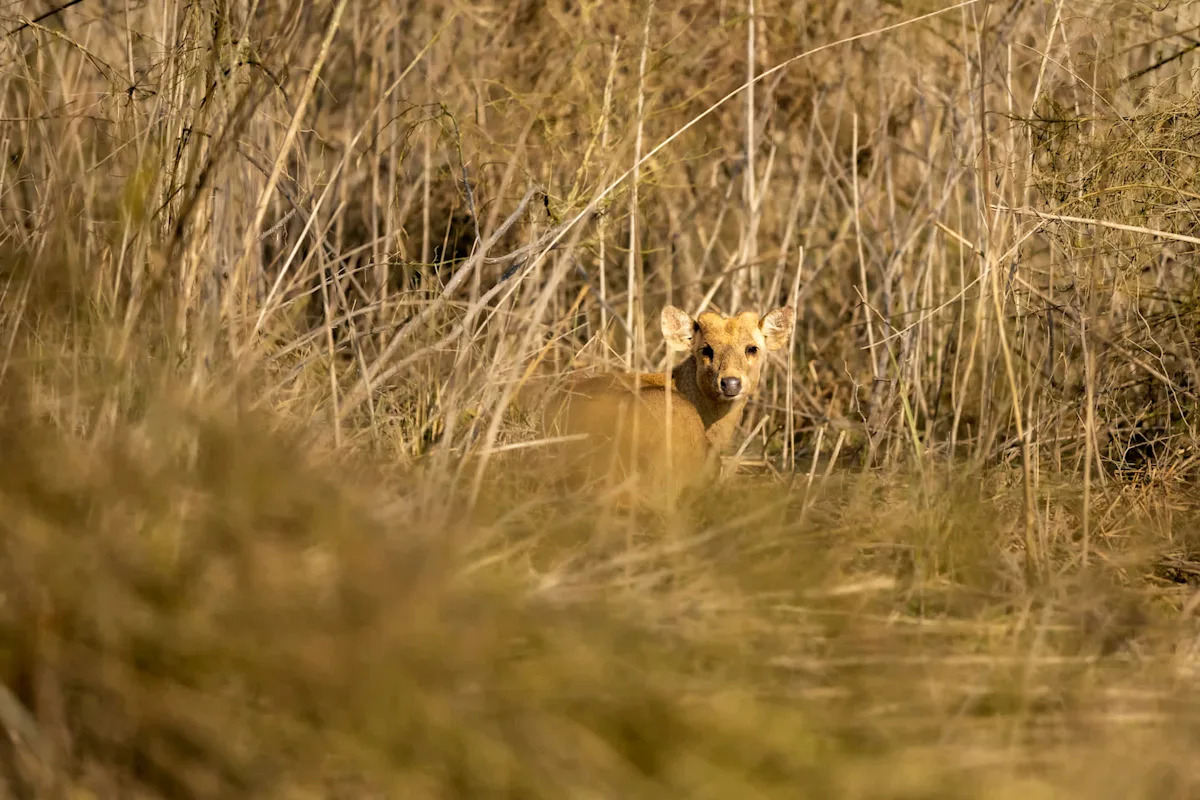A recent survey in Sri Lanka has given conservationists something to celebrate: The country’s most threatened deer species is showing signs of recovery.
The hog deer, once thought to be extinct on the island, is quietly making a comeback in the country’s southwest, as Mongabay reported. These shy animals stand barely 2 feet tall and get their name from the way they dash through the undergrowth with their heads low, like pigs rooting through the forest.
They favor marshy forests and wetlands, but as those habitats shrink, they’ve had to adapt — venturing into cinnamon plantations, rice fields, and vegetable orchards just to survive.
Life isn’t easy for them. Farmers sometimes see them as pests, and fawns are vulnerable to feral dogs and predators. Many are also injured or killed by vehicles.
To give them a fighting chance, a rescue and rehabilitation center — managed by the Wildlife Conservation Society Galle — treats dozens of injured hog deer each year, with many needing care after dog attacks. WCSG even runs a successful captive breeding program on nearby Honduwa Island, releasing dozens of deer back into the wild to boost their numbers.
The good news? Researchers documented 306 adult hog deer and 22 fawns across 175 locations in 2021 and 2022 — an encouraging sign that the population may be stabilizing after years of decline.
“This is a unique part of Sri Lanka’s natural heritage,” said Ranil Nanayakkara of Biodiversity Education and Research. “Protecting it requires science-based management, community participation, and good environmental governance.”
The findings highlight the crucial role locals play in conserving the species. “Community engagement and habitat protection are essential for its survival,” WCSG President Madura de Silva added.
Keeping the hog deer around isn’t just about biodiversity, though — it’s about maintaining healthy wetlands that filter water, support pollinators, and protect nearby farmland from flooding. Success stories such as this remind us that protecting wildlife often benefits people as well.
Sri Lanka’s conservation efforts mirror other inspiring recoveries worldwide, including the reintroduction of Przewalski’s horses in Mongolia or the return of Devils Hole pupfish in Death Valley. Each of these projects shows that when humans work together with nature, entire ecosystems — and the communities that depend on them — can thrive.
Join our free newsletter for good news and useful tips, and don’t miss this cool list of easy ways to help yourself while helping the planet.

